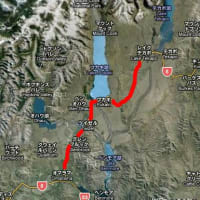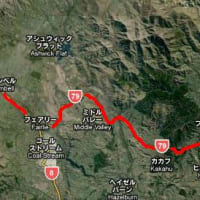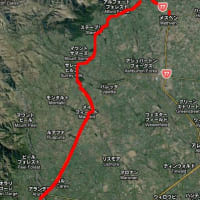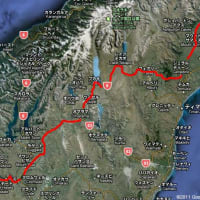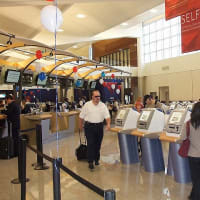 An expert says the proposed cycleway would cost at least $300 million. Photo / Wanganui Chronicle
An expert says the proposed cycleway would cost at least $300 million. Photo / Wanganui ChronicleThe Government is back-pedalling on its national cycleway plan, preferring to talk of a network of projects rather than Prime Minister John Key's initial vision of a ribbon of concrete from Kaitaia to Bluff.
But the concept is gaining momentum as the Ministry of Tourism prepares to open discussions with the government rail agency Ontrack today on potential routes, and more ideas are unveiled for local cycleways which could become part of a national spine.
These include a cycleway and walkway from the "seabird coast" at Kaiaua south of Auckland to Thames, using 20km of flood protection stopbanks along the Hauraki Plains, an idea endorsed in principle yesterday by three district mayors.
Mr Key, who is also Minister of Tourism, yesterday remained loyal to the idea of some form of national cycleway to boost jobs and regional development while promoting New Zealand to international visitors.
He said officials were working on options, and he expected reports by the end of the week.
But he acknowledged that paved routes could be expensive and that the cycleway might take another shape than the 3000km of concrete pathway he envisaged after last month's Job Summit.
"I suspect there will be bits of it that are paved and bits of it that won't," he said.
Mr Key denied that an initial cost estimate of $50 million for a national cycleway could be ruled out, saying, "It depends on how you do it, and what you do."
This follows a calculation by the head of the Auckland outdoor recreational engineering firm Frame Group, Trevor Butler, that a concrete surface the length of New Zealand would cost at least $300 million, without counting land acquisition and river crossings.
Mr Butler told the Herald last night his calculation was based on a "rock bottom" figure of $100 a metre of concrete, producing a pathway about 1.5m wide.
Sections of a 3m-wide concrete cycleway being built between Southdown and Mt Roskill range in average cost from $300 to $575 a metre, but that has included cleaning contaminated land and providing lighting, which would probably not be installed in rural areas.
Mr Butler said the Prime Minister's idea could be turned into "a really worthwhile project", but even a gravel surface would cost at least $60 a metre.
Ministry of Tourism chief executive Ray Salter said surface costs varied greatly between well-lit urban cycleways and some "fairly gnarley" mountain bike tracks which the Conservation Department estimated varied from $20 to $50 a metre.
"My expectation is that there will be a whole diversity of tracks," he said.
Mr Salter also played down the feasibility of one cycleway the length of New Zealand.
"It's fair to say that a cycle route that was one track from Cape Reinga to Bluff probably wouldn't fulfil the multiple objectives that a cycleway envisages," he said.
"Not many people are going to cycle from Cape Reinga to Bluff. We certainly see it in terms of a range of attractions that are joined up, and a long-term vision would be to have a network from the tip of the North Island to the bottom of the South."
Mr Salter is to meet Ontrack today, to discuss using disused lines and gaining access to the rail network.
Cited NZ Herald











